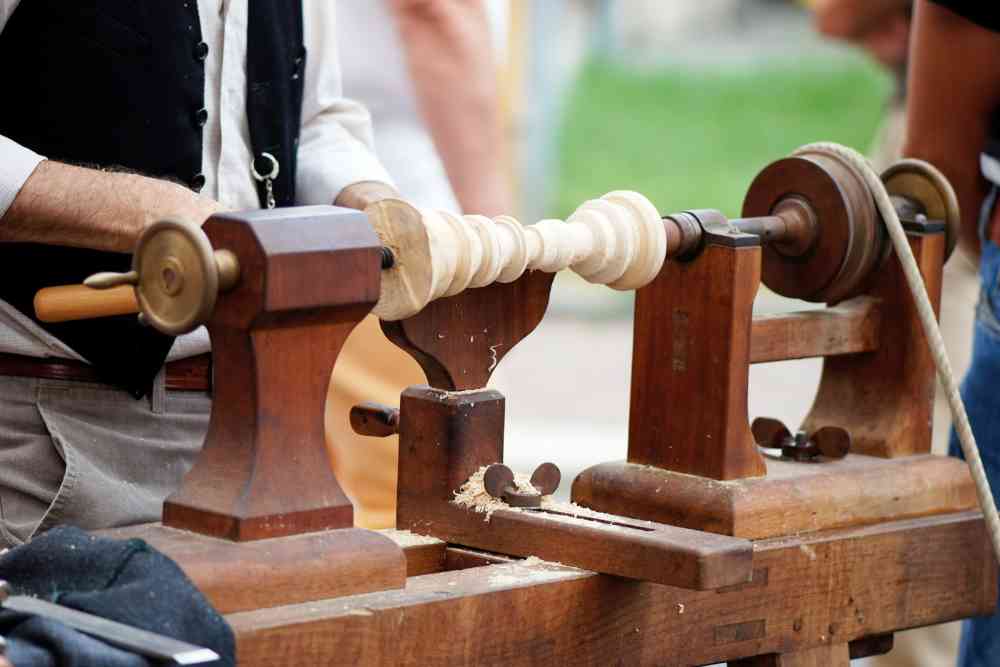You are looking for a lathe, but don’t know what it is used for.
You have no idea how to use a lathe. We will show you what is a lathe used for, and where you can get one.

What is Lathe
A lathe is a machine that rotates a workpiece about an axis of rotation to perform various operations such as cutting, sanding, knurling, drilling, or deformation with tools that are applied to the workpiece to create an object with symmetry about that axis.
Lathes are used in woodworking, metalworking, and machining. In woodturning, a lathe is used to shape bowls, plates, candlesticks, spindles, and other objects out of wood.
In metalworking, a lathe is used to create parts such as gears, shafts, and axles. The machinist uses the lathe to cut threads onto bolts or screws.
Types of Lathe
There are several types of lathes that are used in manufacturing. The most common type is the engine lathe, which is used to create cylindrical parts.
The toolroom lathe is another common type that is used for precision work. The turret lathe is a specialized type of lathe that has a turret that holds multiple tools.
What Is A Lathe Used For?
A lathe is a tool that spins a block of material to perform various operations such as cutting, sanding, or drilling. It is one of the most important tools in a machine shop.
There are many different types of lathes, and each has its own specific purpose. However, all lathes work by rotating a piece of material against a cutting tool.
This action creates friction, which produces heat. The heat generated by the friction can cause the material to become brittle and break.
A lathe is used for following operations.
-Turning
-chamfering
-Thread cutting
-Taper turning
-Facing
-filing
-Drilling
-Grooving
-key-way cutting
-parting-off
-Gear cutting
– And milling
-Grinding
-Knurling
-polishing
How Does Lathe Work
A lathe is a machine that rotates a piece of work while a cutting tool is brought to bear against it, shaping it into the desired form.
The work is supported on a spindle that runs in bearings at either end of the headstock, and the cutting tool is held in a chuck or toolpost that is mounted on the carriage.
The carriage rides on ways (rails) located at either side of the bed and its motion is controlled by handwheels or levers that engage with racks cut into the ways.
The most common type of lathe is the engine lathe, which can be used to create various parts with cylindrical, conical, or other shapes.
These parts may have external or internal threads (gears), splines, tapers, or other features machined into them.
A lathe is a machine that rotates an object to shape it. The lathe has been used for centuries to create objects such as bowls, furniture legs, and chess pieces.
The lathe works by spinning the object being shaped. The operator uses different tooling to cut and shape the object.
The most common tooling is a chisel, but other tools can be used depending on the desired outcome.
Lathes come in many different sizes and can be operated manually or by machinery. The size of the lathe will dictate how large of an object can be shaped.
Tips & Tricks for Using Lathe
There are many different ways to use a lathe. Here are some tips and tricks for using this versatile tool:
- When cutting a piece of stock, always use the longest tool possible. This will minimize vibration and provide the best finish.
- When making a cut, always use the slowest speed possible. This will help to prevent the tool from breaking and will produce a better finish.
- Always support the workpiece securely. This will help to prevent it from moving while you are working on it and will also help to produce a better finish.
- When sanding or polishing a workpiece, always use the highest speed possible. This will help to remove material quickly and evenly.
- Always clean the lathe after each use.
- Always use sharp tools. This will help minimize vibration and ensure a smooth cut.
- Use the proper speed for the tool and material you’re working with. Going too fast can cause the tool to break or chatter, while going too slow will result in a poor finish.
- When making cuts, take shallow passes rather than trying to remove too much material at once. This will help prevent the tool from getting bogged down or overheating.
- Keep your tools clean and well-maintained. This includes wiping them down after each use and regularly sharpening them as needed.
- Use steady, even pressure when cutting.